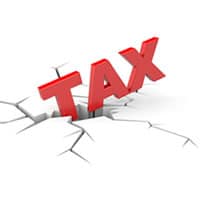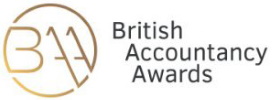Official statistics have shown that the UK tax gap fell to its lowest-ever level of 6.5 per cent in 2014/15, as HM Revenue & Customs (HMRC) intensifies its crackdown on tax avoidance, evasion and non-compliance.
HMRC has made significant progress in reducing the tax gap – the difference between the amount of tax due and the amount collected – in recent years; closing it from 8.3 per cent in 2005/2006 to the current rate of 6.5 per cent.
According to the official report this means, had things remained the same since 2005/2006, the gap would have equated to £47 billion and the public purse be £11 billion a year smaller as a result.
Expert interpretation of the data hints that HMRC’s digital transformation is having a positive effect on the tax take by making it easier for people to pay the right amount of tax, with some pointing to the introduction of real time information (RTI) for Pay As You Earn (PAYE) being the first major step.
The system has led to more accurate recording of information on payroll taxes, and the additional shift to bring VAT reporting online has helped shrink the VAT gap in 2014/15 to its lowest level of 10.3 per cent (£12.7 billion).
Financial Secretary to the Treasury, Jane Ellison said: “This government is committed to tackling tax evasion and avoidance wherever it occurs.
“The UK has one of the lowest tax gaps in the world. By investing £1.8 billion since 2010 in boosting HMRC compliance capabilities, we’ve brought our tax gap down to its lowest ever level. And to make it even easier for people to pay the right tax in the future, we’ve invested £1.3 billion in new digital tools.”
HMRC’s Chief Executive, Jon Thompson, added: “These figures show we have successfully maintained a downward pressure on the tax gap in 2014-15, while collecting record revenues of £518 billion.
“The UK is an honest and compliant country when it comes to tax, as the vast majority of people and businesses pay what they owe, when they owe it. We should be proud that we meet our obligation as a nation in willingly paying for our public services, which is why we have one of the lowest tax gaps anywhere in the world.
“But if we are to ensure a fairer and more effective tax system, and more money for public services, we must keep up the pressure on the tax gap by relentlessly pursuing the small minority who seek to cheat their taxes through evasion, aggressive avoidance and organised crime.”
In recent years the government has invested an additional £1.8 billion to tackle tax evasion, avoidance and non-compliance, which is also thought to have helped reduce the gap significantly.
This funding has helped HMRC secure £2.5 billion from offshore tax evaders since 2010 and around £130 billion in compliance yield since 2010.
However, Prem Sikka, a professor of accounting at the University of Essex, said: “HMRC’s measure of the tax gap is not credible as it excludes profit-shifting techniques used by Google, Microsoft, Apple and others.”
In a recent report for Labour, Sikka said: “The [HMRC tax gap] estimate depends on the policies and practices that HMRC is willing to accept or challenge … HMRC has not challenged [multinationals’] tax practices whereas other countries have shown a greater willingness to challenge the same.”
Alex Cobham, research director at Tax Justice Network, added: “There is a real risk that this tax gap analysis may be taken seriously as the basis for policy – in which case HMRC would continue to ignore the major revenue risks represented by multinationals. It’s important for public confidence, as much as for better policymaking, that HMRC swiftly addresses this spurious estimate.”
Link: Measuring Tax Gaps Report
















